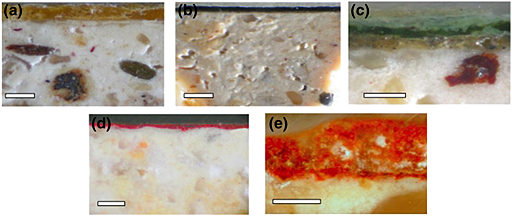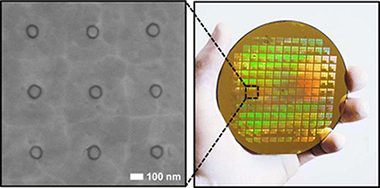Artículos SCI
2016
2016
Materiales Avanzados
Effect of lime on stabilization of phyllite clays
Garzon, E; Cano, M; O'Kelly, BC; Sanchez-Soto, PJApplied Clay Science, 123 (2016) 329-334
Show abstract ▽

This paper represents a new advance in the study of engineering properties and material applications of phyllite clays. Considering their potential use as construction materials for structures subjected to low stress levels, this laboratory research investigated the stabilization and improvement in engineering properties of a Spanish phyllite clay achieved by the addition of 3, 5 and 7 wt.% lime. Geotechnical properties investigated include the consistency limits, compaction, California Bearing Ratio, swelling potential and water-permeability. The phyllite clay–lime mixtures had good compaction properties and very to extremely low permeability-coefficient values, with a semi-logarithmic correlation between increasing permeability and increasing proportion of lime additive. The addition of 3 wt.% lime was sufficient to reach the index of capacity amble specified in the Sheet of Technical General Prescriptions for Works of Roads and Bridges PG–3 (Spanish Highways Agency, 2008), significantly reducing the plasticity index value, with the compacted mixture undergoing no swelling under soakage. The required pavement thicknesses for the raw phyllite–clay material and the phyllite clay–lime mixtures are compared and discussed. Potential applications for phyllite clay–lime mixtures include for pavements/road subgrade, earth construction, building materials and for impermeabilization purposes.
Abril, 2016 | DOI: 10.1016/j.clay.2016.01.042
Nanotecnología en Superficies y Plasma
Nickel-copper bilayer nanoporous electrode prepared by physical vapor deposition at oblique angles for the non-enzymatic determination of glucose
Salazar, P; Rico, V; Gonzalez-Elipe, ARSensors and Actuators B: Chemical, 226 (2016) 436-443
Show abstract ▽

This work presents a novel bilayer Ni/Cu porous nanostructured film electrode prepared by physical vapor deposition (PVD) in an oblique angle configuration. Scanning electron microscopy (SEM) data revealed that the film, with an approximate thickness of 200 nm, is formed by tilted nanocolumns of around 50 nm of diameter and an inclination of 30° with respect to the surface normal. X ray photoelectron spectroscopy (XPS) data confirmed a bilayer configuration with Cu and Ni located at the top and bottom parts of the film, respectively. A porosity of ca. 45–35% as determined by Rutherford back scattering (RBS) offered a large exposed area and excellent diffusion properties that, combined with a very good catalytic activity, rendered these films excellent electrodes for the quantitative determination of glucose. Under optimized working conditions of detection these electrodes presented a high sensitivity of 2.53 A M−1 cm−2 (R2: 0.999), a limit of detection of 0.23 μM and a time response of ca. 2 s. The sensors did not show any loss of response during a period of 4 months. The selectivity of the sensor was checked against various interferences, including physiological compounds, different sugars and ethanol, in all cases with excellent results. The feasibility of using of this sensor for practical applications was confirmed by successfully determining the glucose content in different commercial beverages.
Abril, 2016 | DOI: 10.1016/j.snb.2015.12.003
Materiales de Diseño para la Energía y Medioambiente
Strength and microplasticity of biocarbons prepared by carbonization in the presence of a catalyst
Shpeizman, VV; Orlova, TS; Smirnov, BI; Gutierrez-Pardo, A; Ramirez-Rico, JPhysics of the Solid State, 58 (2016) 703-710
Show abstract ▽
The microdeformation has been investigated under uniaxial compression of beech-derived biocarbons partially graphitized during carbonization in the presence of a Ni- or Fe-containing catalyst. The strength and ultimate fracture strain have been determined at different temperatures of carbonization of the samples in the absence or in the presence of a catalyst. It has been shown using high-precision interferometry that the deformation of biocarbon samples under uniaxial loading occurs through jumps (in magnitude and rate of deformation) with axial displacements in the nanometer and micrometer ranges. The use of a catalyst leads to a decrease in the size of nanometer-scale jumps and in the number of micrometer-scale jumps. The standard deviations of the strain rate on loading steps from the smooth average dependence of the strain rate on the displacement have been calculated for micrometer-scale jumps. A similar characteristic for nanometer- scale jumps has been determined from the distortion of the shape of beats in the primary interferogram. It has been shown that the variation in the standard deviation of the strain rate with a change in the carbonization temperature is similar to the corresponding dependence of the ultimate fracture strain.
Abril, 2016 | DOI: 10.1134/S1063783416040223
The Structure and Chemical Composition of Wall Paintings From Islamic and Christian Times in the Seville Alcazar
Robador, MD; De Viguerie, L; Perez-Rodriguez, JL; Rousseliere, H; Walter, P; Castaing, JArchaeometry, 58 (2016) 255-270
Show abstract ▽

Wall paintings from the Islamic epoch (10th to 12th centuries) and the Christian monarchy (14th to 16th centuries) have been recovered in discarded materials and on walls after reconstruction works in the Seville Alcazar. These paintings have spent centuries underground or under a plaster coat. Portable X-ray fluorescence (XRF) and combined XRF/X-ray diffraction (XRD) were employed in situ, as well as scanning electron microscopy (SEM-EDX), grazing angle incidence XRD and micro-Raman spectroscopy, on cross-section samples to fully characterize the materials in the wall paintings. Using these methods, the fresco technique was demonstrated, and many kinds of pigments were identified in accordance with the various periods of the history of the Alcazar, thus assessing the authenticity of all the wall paintings studied here.
Abril, 2016 | DOI: 10.1111/arcm.12218
Materiales Ópticos Multifuncionales
High-Throughput Fabrication of Resonant Metamaterials with Ultrasmall Coaxial Apertures via Atomic Layer Lithography
Yoo, D; Nguyen, NC; Martin-Moreno, L; Mohr, DA; Carretero-Palacios, S; Shaver, J; Peraire, J; Ebbesen, TW; Oh, SHNano Letters, 16 (2016) 2040-2046
Show abstract ▽

We combine atomic layer lithography and glancing angle ion polishing to create wafer-scale metamaterials composed of dense arrays of ultrasmall coaxial nanocavities in gold films. This new fabrication scheme makes it possible to shrink the diameter and increase the packing density of 2 nm-gap coaxial resonators, an extreme subwavelength structure first manufactured via atomic layer lithography, both by a factor of 100 with respect to previous studies. We demonstrate that the nonpropagating zeroth-order Fabry-Perot mode, which possesses slow light-like properties at the cutoff resonance, traps infrared light inside 2 nm gaps (gap volume similar to lambda(3)/10(6)). Notably, the annular gaps cover only 3% or less of the metal surface, while open-area normalized transmission is as high as 1700% at the epsilon-near-zero (ENZ) condition. The resulting energy accumulation alongside extraordinary optical transmission can benefit applications in nonlinear optics, optical trapping, and surface-enhanced spectroscopies. Furthermore, because the resonance wavelength is independent of the cavity length and dramatically red shifts as the gap size is reduced, large-area arrays can be constructed with lambda(resonance) >> period, making this fabrication method ideal for manufacturing resonant metamaterials.
Marzo, 2016 | DOI: 10.1021/acs.nanolett.6b00024
- ‹ anterior
- 227 of 420
- siguiente ›














